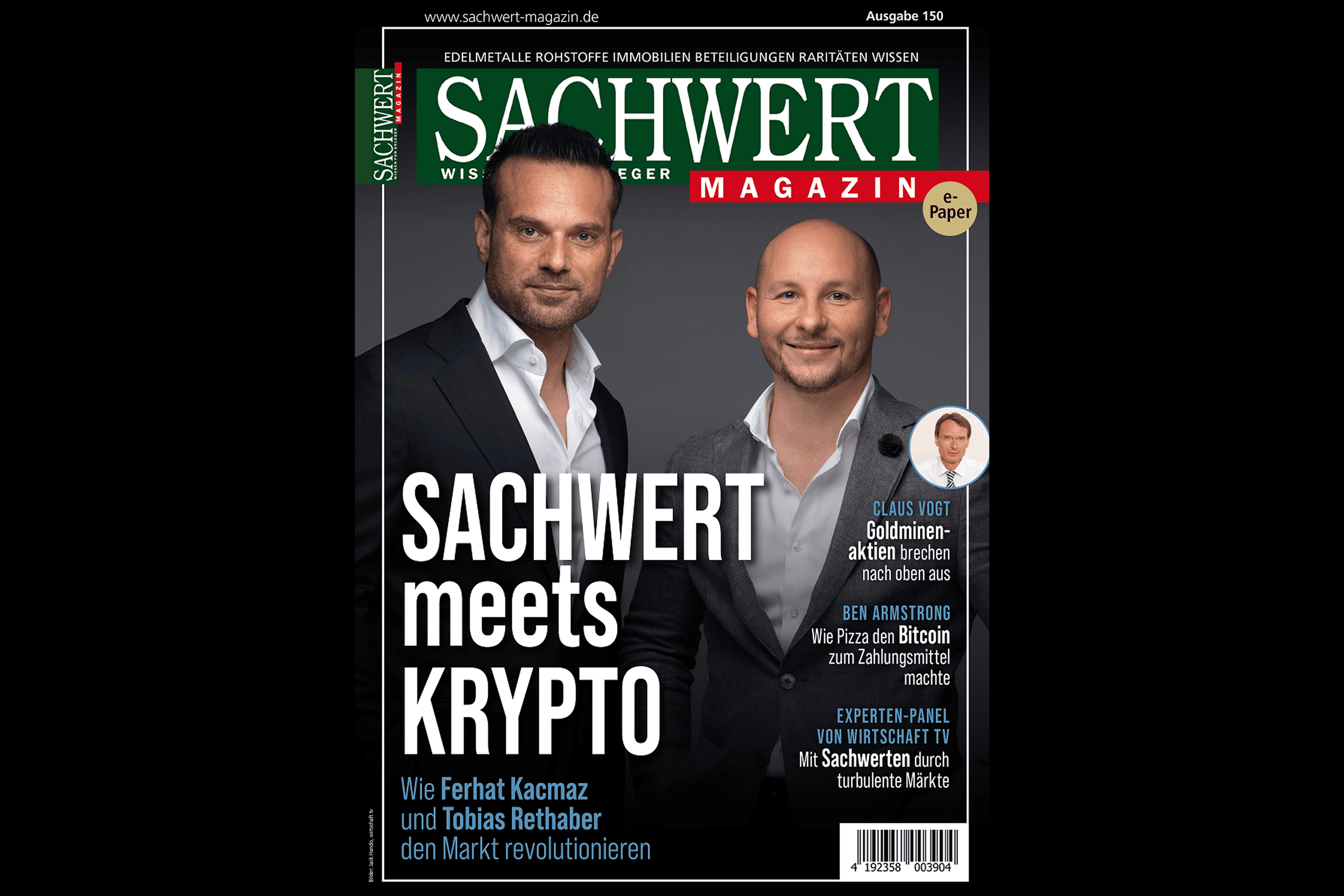Ferhat Kacmaz
MiningFarmDubai and the invisible revolution – how crypto mining is reinventing the capital market
How ESG and commodity scarcity are reshaping capital markets – and why crypto mining in Dubai is becoming a litmus test. Pressure waves in the system: Why are the rules of the game being rewritten?
2024
How ESG and commodity scarcity are reshaping capital markets – and why crypto mining in Dubai is becoming a litmus test. Pressure waves in the system: Why are the rules of the game being rewritten? The major shift in the capital markets is taking place quietly – yet unmistakably. Where growth curves, interest rate cycles, and profit margins long dictated the direction, two forces are now at work that cut deeper: genuine raw material scarcity and strict sustainability requirements. Both are forcing companies and investors to price risks differently, restructure strategies, and view transparency not as PR but as the cost of capital. Anyone seeking capital in this environment must provide answers: Where do the metals for the energy transition come from? Who bears the ecological, social, and governance risks – and how are they managed? And what will apply when "mining" no longer just means shovels and rocks, but also computing power, hashrate, and the electricity mix? ESG is not a label – it is the new cost of capital With the introduction of European reporting requirements, ESG has crossed the threshold from a "nice to have" to a harsh reporting reality. The Corporate Sustainability Reporting Directive (CSRD) requires affected companies to submit standardized disclosures in accordance with the ESRS for the first time for the 2024 fiscal year – the reports will be published in 2025. This embeds sustainability into the accounting logic, making it verifiable, comparable, and enforceable. For corporations, suppliers, financiers – and also for operators of digital and traditional "mines" – due diligence, covenants, and investor discussions are fundamentally changing. And yet, at the same time, the EU is trying to ease the burden, discussing relief and streamlined requirements without losing sight of the goal. Anyone who takes this seriously understands: ESG hasn't disappeared – it's becoming more professional. Shortage with announcement: Copper, lithium & Co. as the price of the energy transition The International Energy Agency paints a clear picture: The triumph of solar, wind, and electromobility is causing demand for key minerals to explode. Copper and lithium, in particular, are in focus – with higher supply and volume risks, while the processing of many materials remains concentrated in a few countries. The market power of a few producers and refiners is already growing, increasing vulnerability in supply chains, prices, and political leverage. Studies predict a copper shortage by 2035, which – unless massive capital is flowed into new projects – will slow down electrification. This scarcity is not an abstract trend, but the new foundation for valuation, risk premiums, and portfolio strategy. A look at the rules: When regulation directs capital flows Rules determine where investments go. The EU is regulating crypto and digital assets with MiCA: Requirements for stablecoins have been in place since June 2024, and the rest – particularly the licensing requirement for service providers – will take effect on December 30, 2024. In addition, there are cross-sectoral CSRD obligations and the European Raw Materials Strategy (CRMA), which aims to accelerate the mining, processing, and recycling of strategic materials in Europe. Each of these standards sets price signals – not only for metal mines, but also for digital infrastructures that consume energy and require capital. Those who master compliance lower their cost of capital; those who stumble pay interest premiums, lose investors, or lose market access. Dubai as a strategic location: regulatory clarity meets energy transition ambition Why are players like MiningFarmDubai moving to the desert state? Because it's where regulatory clarity and energy ambition converge. Dubai's Virtual Assets Regulatory Authority (VARA) regulates virtual assets in large parts of the emirate and creates a consistent framework for exchanges, custody providers, and other VASP businesses—an environment in which mining-related business models can also be cleanly structured. At the same time, local stock exchanges are professionalizing sustainability reporting: The Dubai Financial Market (DFM) has updated its 2023 ESG Guidelines, and the Abu Dhabi Securities Exchange (ADX) is publishing concrete disclosure guidance; the authorities are coordinating disclosure principles. For investors, this means comprehensible rules, predictable processes, and increasing transparency. Energy as a competitive factor: From solar park to server hall Locations that provide large, reliable, and increasingly clean amounts of electricity are becoming magnets for data centers—and thus also for crypto mining infrastructure. Dubai points to the Mohammed bin Rashid Al Maktoum Solar Park program, which targets a capacity of 5 GW by 2030 and is already delivering at a gigawatt scale. This creates predictable power paths for energy-intensive applications that can be translated into power purchase agreements, certificate systems, and ESG reports. This is precisely where the lever lies: Cost, availability, and CO₂ intensity of electricity are not a footnote, but the heart of every mining business case—whether it involves computing power or ore mining. But what does this mean specifically for investors? This is where MiningFarmDubai comes in: With an algorithm-driven system that guarantees 100 percent uptime, energy is not wasted but converted into consistent performance. With Kaspa, one of the fastest and most energy-efficient proof-of-work currencies, the available energy is not only utilized but multiplied – in speed, efficiency, and sustainability. And the specially developed app makes this promise tangible: It brings the entire mining infrastructure to customers' smartphones, displaying hash rates, yields, and energy consumption in real time – clearly, intuitively, and accessible at any time. Isn't that the true paradigm shift? That electricity, which once flowed anonymously through cables, is now becoming a visible, controllable, and transparent asset that gives investors confidence and predictability? MiningFarmDubai proves that energy is no longer just a cost factor, but can become a strategic competitive advantage – because technology, transparency, and sustainability are combined for the first time in a single platform. Mining, re-spelled: When shovels become chips "We see ourselves as modern miners," says Ferhat Kacmaz. "Our shafts are air-conditioned server rooms, our tools are specialized processors." MiningFarmDubai scales computing power for proof-of-work networks – with a particular focus on Kaspa – combining hosting and service, thus addressing investors seeking predictable cash flows from coins and residual value from hardware. The case depends on three variables: energy costs, hardware efficiency, and network economics. This is where ESG translates into profitability: Transparency about electricity origin, increased efficiency through immersion cooling, predictive maintenance, and traceable payouts create the trust that institutional capital demands. Ferhat Kacmaz sums it up: "Without robust ESG arguments, crypto mining will no longer receive capital on reasonable terms in four years – with them, it will become an infrastructure bet on the digital economy." The hard numbers: Measuring energy demand, quantifying risks How energy-hungry is crypto mining really? The Cambridge Index shows fluctuations – depending on price, hash rate, and hardware efficiency, Bitcoin consumption fluctuates on an annual basis in the range of around 100 to well over 100 terawatt hours. That's a lot – and precisely why the levers are so open: site selection, electricity mix, efficiency. For investors, it's crucial whether operators can secure access to reliable, increasingly renewable sources through PPAs, ensure resilience, and demonstrably reduce energy costs per calculated hash. The evaluation also includes the comparative question: Where is emission intensity declining faster – in regions with a growing share of green electricity or in grids that rely on fossil fuel peak loads? The answers to these questions determine valuation ranges, covenants, and exit multiples. From ore to the balance sheet question: scarcity, concentration and political risks Raw material scarcity cannot be moderated away. It is physical. The IEA warns of increasing concentration along the value chain; bottlenecks in mining, refining, and transportation act as shock amplifiers in political crises. Added to this are approval times of years or even decades for new mines and facilities. The result on the capital market: premiums for diversification, stricter requirements for traceability and ESG audits, and the growing importance of recycling stories and substitution. Those seeking capital must clearly demonstrate how supply chains are distributed, risks are managed, and rebound effects (falling commodity prices, rising capital costs) are cushioned. The lesson applies analogously to crypto mining: Single points of failure in energy or hosting are no longer investable today. Legal map: three systems – three investment logics With MiCA, Europe is focusing on a uniform licensing and supervisory regime for crypto service providers, and with CSRD, on comprehensive sustainability reports. The Critical Raw Materials Act addresses dependence on key minerals. The US continues to struggle with the definition of crypto assets and their supervision, which reduces planning security. Dubai, on the other hand, is establishing a coherent set of rules for virtual assets with VARA, while ESG disclosures are structured through exchange guidelines and regulatory principles. Correct classification is crucial: crypto mining itself primarily falls under the general corporate, energy, real estate, and data center regime; VASP activities such as trading, custody, and brokerage are primarily regulated. For operators, this means setting up a clean corporate structure, reviewing licenses, complying with energy and environmental regulations—and reporting the ESG story in a verifiable, financially viable manner. What investors want to see now: Measurable resilience instead of green poetry The discerning readership – asset managers, entrepreneurial families, female entrepreneurs, and next-gen decision-makers – doesn't demand glossy information, but rather robust metrics: energy per hash, downtime, PPA coverage, residual hardware values, governance mechanisms. These metrics connect with the "old" questions of the raw materials world: Where does the copper for the new networks come from? How diversified is the lithium mix? What regulatory surprises lie in the next election cycle? The trick lies in considering both worlds together: The copper line that feeds a data center and the hash rate that generates cash flow are two sides of the same capital market story. Narrative and number, story and audit, location and electricity mix – everything intertwines. Mining Farm Dubai as a location thesis: Why Dubai wants to set the benchmark In practice, this means that anyone scaling computing power in Dubai must translate their locational advantage into tangible benefits. This begins with electricity costs and availability, extends to grid connectivity, cooling, maintenance, insurability, and ends with the question of how customer funds, coin flows, and reporting are technically and legally secured. MiningFarmDubai positions itself precisely at this intersection: German-speaking support, hosting infrastructure, a focus on efficiency chains—and an environment where ESG standards are combined with investability. The bet is: When regulation is clear, energy is predictable, and reporting requirements are professional, crypto mining will shift from a gambling corner to an infrastructure bet that can exist in a portfolio alongside grid operators and data center REITs. Final image: The double mine – what the earth and the server hall have in common The invisible revolution consists in the logic of scarcity being written into the logic of the capital markets. Deep underground and in the whirring hall lights of server farms, the same raw material is being refined: reliability. Copper cables that carry the transformation. Data centers that secure digital assets. ESG that turns a footnote into a financing requirement. And a location like Dubai, with clear regulations and a growing green energy base, dares to experiment: whether mining – in both senses of the word – will become a bridge between generations. For older generations who value stability. For younger generations who want to combine value and growth. For all those who know: capital markets are not a law of nature. They are what we make of scarcity, rules, and ideas.
















